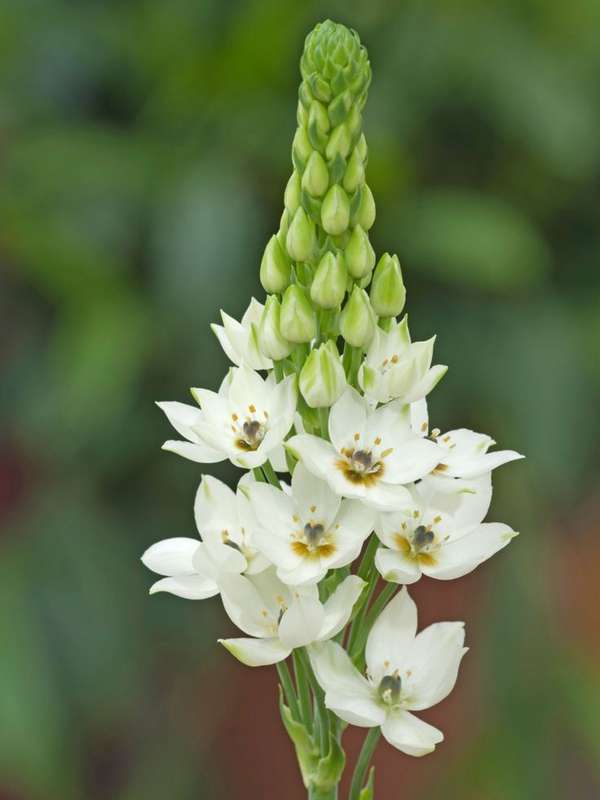



Ornithogalum White (Regular) - 50 bulbs p-pack
Check my rate
| Main centres: | 1-3 business days |
| Regional areas: | 3-4 business days |
| Remote areas: | 3-5 business days |




| Main centres: | 1-3 business days |
| Regional areas: | 3-4 business days |
| Remote areas: | 3-5 business days |
Ornithogalum 'White' (commonly known as Star-of-Bethlehem) is a beautiful bulbous perennial known for its pure white star-shaped flowers that bloom in spring. It's a hardy and low-maintenance plant that thrives in various South African climates, especially in gardens, flower beds, and rock gardens. Here's how to grow and care for Ornithogalum 'White' in South Africa.
Climate:
Ornithogalum 'White' thrives in mild to temperate climates.
It grows best in regions such as the Western Cape, Eastern Cape, and KwaZulu-Natal where winters are cooler, and summers are moderate.
The plant can tolerate some frost during winter but generally prefers areas with mild winters and dry summers.
Sunlight:
Full sun to partial shade is ideal for Ornithogalum.
For the best flowering, the plant should receive at least 4—6 hours of sunlight per day.
In hotter areas, providing afternoon shade can protect the plant from the intense midday heat, especially during summer.
Soil Requirements:
Ornithogalum prefers well-draining soil, and it thrives in loamy, sandy, or gravelly soils that are rich in organic matter.
Soil pH: Slightly acidic to neutral (pH 6.0—7.0).
Ensure good drainage to avoid bulb rot. If you have clay-heavy soil, consider adding organic matter or sand to improve drainage.
Best Planting Time:
Autumn (April to May) is the best time to plant Ornithogalum bulbs in South Africa, allowing them to establish roots before the cooler winter months.
Spring planting is possible in warmer regions, but the flowers may bloom later in the season.
Depth & Spacing:
Plant the bulbs about 5—10 cm deep (with the pointed end facing up).
Space bulbs about 10—15 cm apart to allow for proper growth and spread.
For a natural, massed look, plant bulbs in groups for a dramatic effect.
Container Growing:
Ornithogalum bulbs can be grown in containers, making them ideal for patios and small garden spaces.
Use a well-draining potting mix in containers, and ensure that the pots have drainage holes.
A pot depth of at least 20 cm will provide enough room for growth.
Watering:
Moderate watering is recommended, especially after planting the bulbs. Keep the soil slightly moist but not waterlogged.
Once established, Ornithogalum 'White' is quite drought-tolerant and doesn't require frequent watering.
Water regularly during the growing season (late winter to spring) but reduce watering after flowering as the plant goes into dormancy in summer.
Fertilizing:
Slow-release fertilizer or compost can be added to the soil at planting time to provide initial nutrients for healthy growth.
During the growing season, you can apply a balanced liquid fertilizer every 2—3 weeks to promote strong growth and blooms.
After flowering, stop fertilizing and allow the plant to enter its dormant phase.
Mulching:
Apply a layer of mulch around the base of the plant to help retain moisture and keep the soil temperature consistent.
Mulch also suppresses weed growth and helps keep the roots cool during summer.
Be careful not to pile mulch up around the bulb itself.
Bloom Time:
Ornithogalum 'White' produces pure white star-shaped flowers in late spring to early summer, usually from September to November.
The flowers appear on tall stems (30—45 cm) and are highly attractive to pollinators like bees and butterflies.
After Flowering Care:
After blooming, deadhead the flowers to encourage the plant to conserve energy in the bulb for the next growing season.
Allow the foliage to die back naturally, as this helps the bulb store nutrients for future growth.
Do not cut back the leaves until they have yellowed and dried out, which usually occurs in late spring or early summer.
Lifting & Storing Bulbs (Optional):
In wet areas or regions with heavy rains during summer, you may want to lift the bulbs after flowering and store them in a cool, dry place until you are ready to plant them again in autumn.
In most regions, however, Ornithogalum bulbs can be left in the ground and will naturalize year after year.
Common Pests:
Ornithogalum is generally resistant to pests, but it may occasionally attract aphids or snails/slugs.
Aphids can be controlled using neem oil or ...